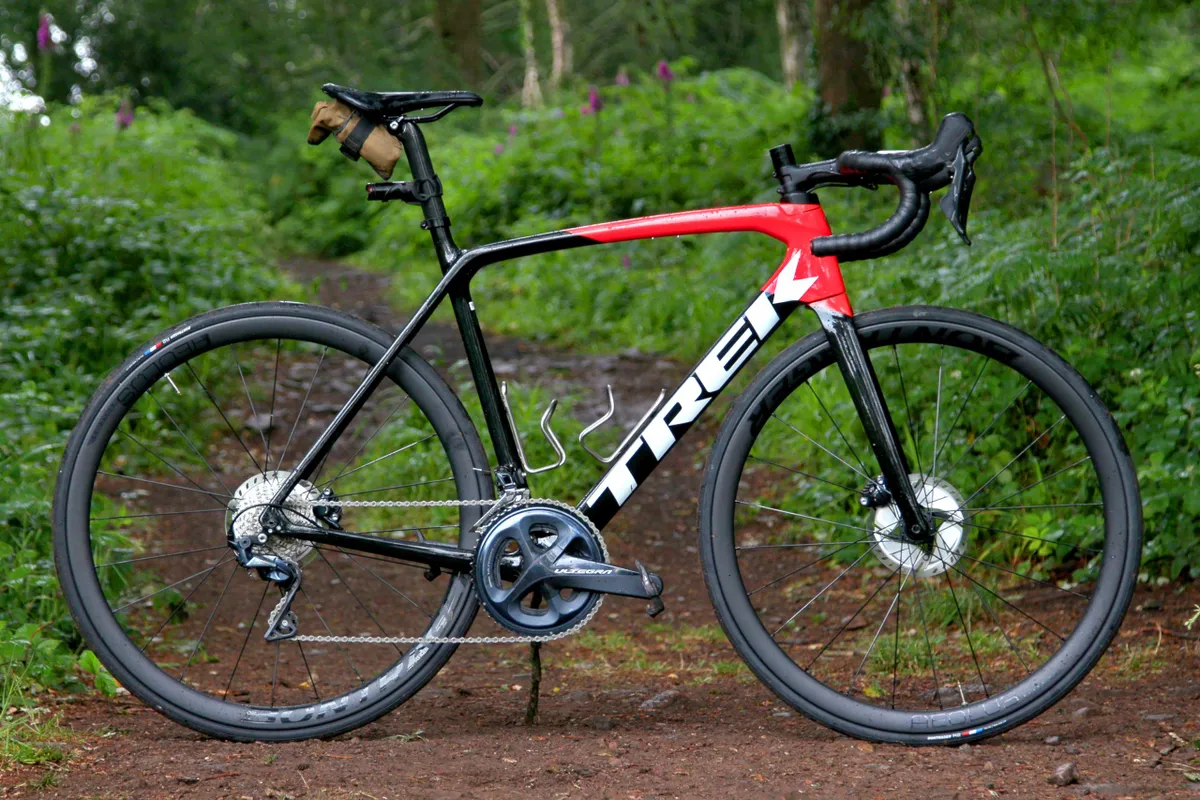BikeRadar’s tech Q&A is your chance to have any cycling questions answered by our tech team and trusted industry experts. This time, we address a common question and comment levelled at BikeRadar and our contemporaries in the cycling media.
Why do you always test such expensive bikes?
Everyone
This question crops up most commonly when a new bike launches, and it’s a fair point – few people reading BikeRadar are in the fortunate position to be able to buy the £10/$10k+ bikes we frequently review at launch. So why bother?
There are plenty of reasons, but the most important is we don’t always get to choose which bikes we test.
At launch, brands usually have a limited number of test samples available. More often than not, these are premium builds – the kind of bikes used at press camps and for global launches with key dealers.
Understandably, brands want to demonstrate the very best of their new wares, and decking out your pride and joy in Dura-Ace or Super Record is an easy way to make it feel more desirable and exciting.
The peril of embargoes

While we always stress the value of sending us mid-range models, the reality is they’re often not made available to us.
A brand rarely has its full range of builds available to send out when an embargo lifts.
For those unfamiliar, an embargo is the set time and date a brand allows media to publish news or reviews about a new product.
They’re common practice across all industries (even the Department for Transport sends us the odd embargoed story), and they also feed the impression that we focus exclusively on the premium.
When numerous websites all go live at once with headlines about a ridiculously priced superbike, it can feel as though the cycling media is only interested in flagship models.
These early days of a bike’s life have a huge impression on the buying public’s consciousness – another reason why brands like embargoes, because they get to control the narrative, but that’s a point for another day.
This is a problem that’s not going to go away – much like the choice of bikes, we’ve typically got to play by the rules set out by the brands we work with if we want access to their products, and so on.

However, it’s not always this way.
A great example is Trek’s 2020 Émonda launch. We pestered Trek heavily before the launch, and I was able to test a (very good) mid-range model, while my colleague Warren rode the top-end model.
At launch, and long into that model’s lifecycle, my review of the more affordable bike vastly outperformed the halo build in terms of traffic – or, in other words, how much you were interested. This was good for Trek, great for us and even better for readers.
Drawing on another personal example, 2021’s Focus Atlas review – a terrifically well-equipped mid-range bike – performed beyond our expectations when it went live at the embargo time. It was a superb bike and, at less than £2,000 at the time of the launch, great value – and relevant to a lot of BikeRadar readers. I’m certain that a more expensive model wouldn’t have performed as well.
Why mid-range bikes matter most

Those instances are rare, but it doesn’t mean we forget about cheaper models.
Once the initial hype of a launch has passed, our goal is generally to follow up with reviews at lower price points.
These are the bikes more people actually buy, and they remain relevant for months or even years after launch.
Sometimes a follow-up review will be part of a wider feature or a standalone test – it just depends on our overall editorial plans, availability and where a bike fits into all of that.
A prime recent example of this process in action is our recent Cannondale Synapse reviews.
We began with the flagship Synapse Lab71 (the bike Cannondale chose to send us at launch).
Coming in at roughly £13,000, it’s an absurdly expensive model out of reach for nearly all riders. But the recently reviewed Synapse Carbon 2 SmartSense, priced at £7,250, is a far more relevant bike.
I am not by any means suggesting £7,250 is attainable for everyone – I certainly couldn’t afford it – but it’s more relevant to more of our audience than the top-end model, and that review has been going really well since it was published.
In time, I’m confident we’ll test cheaper models still – and that they’ll outperform these two reviews, in traffic terms.

Try as we might, unfortunately, some brands are often cautious about sending cheaper bikes.
With tighter budgets, spec compromises are inevitable, and those are easier to criticise.
Ironically, that’s what makes them more enjoyable to review – and more useful to you – but brands are almost always more forthcoming when we request premium bikes.
Still, take a look at our buyer's guides, and you’ll see a broad spread of price points. It’s true the industry is leaning heavily into premium models – and the sales are following – but we continue to test accessible options whenever we can.
Balancing premium and practical

There is, of course, a place for high-end bikes.
Data plays a key role in our editorial decision-making (we want to produce more of what you like), particularly for reviews, and the numbers are clear: while mid-range bikes are vital to BikeRadar, a huge proportion of our audience still likes reading about exotic bikes, even if they’ll never buy one.
I'll cite commercial sensitivity and keep the 'winner' secret, but at the time of publishing this article, our most popular review of 2025, by some margin, is about a £10,000 bike (an electric bike, no less). That is telling.
If our wonderful audience weren’t reading these reviews, I can say with my boring editor’s hat firmly on that we wouldn’t be publishing them.
- Read more: How does BikeRadar make money?
That shouldn’t come as a surprise – the draw of the shiny and expensive is universal, and there’s nothing wrong with that.
BikeRadar’s mission is to produce editorially independent, useful and authoritative buying advice, even for the premium. While I’m glad we can write buying advice for the 1 per cent, that doesn’t mean the rest of us can’t enjoy reading reviews for the sheer enjoyment of ogling at the carbon exotica.
The bottom line

Testing a daft £14,000 superbike is, of course, a privilege – it would be disingenuous to say I haven’t enjoyed riding around on a Pogačar-level superbike that I have no business riding.
However – and you may want to tune up your minuscule violins for this one – from an editorial perspective, it’s harder to write a useful review of these bikes compared to a well-specced mid-range model.
The compromises of the latter force more meaningful insights and are generally a lot more fun to write. I am personally less moved by the thought of writing a review on a $24,000 titanium halo build than I am by a quirky, affordable steel fixed-gear commuter sold by sandal-toting dorks.
Mid-range, accessible reviews are also the most helpful to our audience and help keep people coming back to BikeRadar.
If I had my way, we’d lead with mid-range bikes every time, but the ball is in the court of the bike brands reading this article. Send us more mid-range bikes at launch – it’ll be good for your brand, the cycling media and the people buying your bikes.

